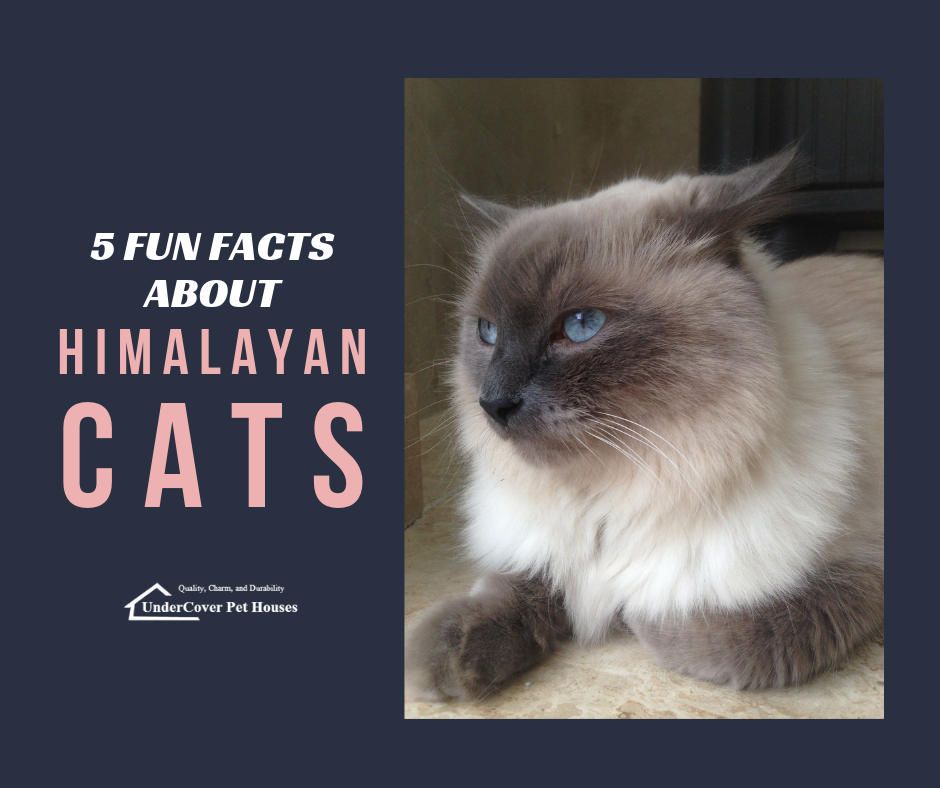 Loading... Please wait...
Loading... Please wait...Blog - fun himalayan cats
5 Fun Facts About Himalayan Cats
Posted by Danny MacDonald on 2019 Aug 28th

Many families love the distinctive appearance and soft, fluffy coat of the Himalayan cat. A breed known for its affectionate nature, Himalayan cats combine the best of both worlds by offering their owners a feline that equally enjoys the quiet life yet is also subject to bouts of surplus energy, making him a great companion for having fun with. Though not all kitties are known to crave human attention, the Himalayan cat is characterized by his intense friendliness to people of all ages and sizes, making him an excellent feline friend for families. There is no question that Himalayan cats are a different class of feline. What are some characteristics that make them unique?
What Makes Himalayan Cats so Special?
Himalayan cats do differ in appearance from other members of the cat family. When compared to other felines, the Himalayan can appear to be distinctly bigger. This is due to the fact that the Himalayan has a thick coat and larger bones than his other kitty counterparts. Interestingly enough, the Himalayan is really only of medium size and weighs between 8-12 lbs. The breed is known to shed only moderately in spite of his long, lush coat. His eye color ranges in hue from blue to copper to a brilliant green, contributing to his unique and regal appearance. When it comes to longevity, this cat’s nine lives typically span from 8-11 years.
Here are five fun facts about Himalayan cats:
The Himalayan cat’s coat comes in many different colours.
The long, straight coat of the Himalayan cat is quite distinctive, making his breed easily recognizable to cat aficionados. Due to its length, this cat requires frequent grooming to keep the coat from becoming matted. His coat color comes in the following shades: chocolate, seal, lilac, blue, black, flame, red, cream, tortoiseshell, frost, silver, golden, brown, fawn, cinnamon. Though today’s families are often in search of a cat that is hypoallergenic and/or low-shedding, this kitty’s coat does not fit within either category.
The Himalayan cat’s face is prone to tear staining. To maintain a pristinely clean demeanour, regular cleaning of the face is necessary.
The Himalayan cat is a recognized breed by the following cat recognition associations: ACFA (American Cat Fanciers Association), FIFe (Federation Internationale Feline), and TICA (The International Cat Association.)
The Himalayn’s appearance is considered to be more extreme than other felines. The torso of the cat is characterized by its short dense composition. The legs of the cat are also short and built quite thickly which matches the cat’s thick neck. Though this cat is known to have dense bone, its ears and tail are quite small and delicate. The head of the Himalayan cat is round in shape with eyes which are well set and both large and round, matching the shape of the head.
One of the most interesting features of the Himalayan cat is the appearance of its head from a side profile. The cat’s face is flat, and when viewed in profile, the direction of the nose reveals the colored skin of the nose leather most prominently, a view not seen when looking at the cat head on.
The Himalayan cat possesses a quiet and gentle nature and kitten-like behaviour.
Though most cats are not known to crave a lot of direct human attention, the Himalayan cat is most definitely an exception to this rule. Himalayans love to be wherever their people are whether that is curled up on the couch next to them or catching up on their zzzzz’s beside them in bed.
Himalayan cats are also incredibly resilient and are not negatively affected by changes to their daily routine.
The Himalayan cat has low exercise needs.
Himalayan cats are not a particularly active breed, preferring to be a pampered house pet. For this reason, their food intake should be carefully controlled to discourage weight gain.
However, just because the Himalayan prefers the sedentary lifestyle does not mean that regular exercise is not necessary for him. Himalayans do love to play and can easily meet their daily exercise needs through such things as interactive toys, catnip-laced balls, and more.
The Himalayan cat originated in the United States.
Though most would naturally assume the Himalayan cat’s origins were based in the Orient, the cat was originally developed in the United States. To achieve the Himalayan cat, breeders began selectively breeding the Persian cat with the Siamese to create this new creature. They were first produced in the early 1930’s with Margueria Gorforth, Virginia Cobb, and Dr. Clyde Keeler receiving credit for the first successful breeding resulting in offspring with the desired appearance.
In 1935, some British breeders visited the United States with the specific purpose of seeing this new breed of cat. At this time, a breeding program was undertaken in England to continue the Himalayan lines.
The Himalayan became an accepted breed in the mid-1950’s with the very first cat champion being Goforth’s La Chiquita. By the 1960’s, the breed was recognized by every reputable cat body.
Thinking about adding a Himalayan cat to your family? They make excellent family companions. Cuddle up with one on your couch today!
